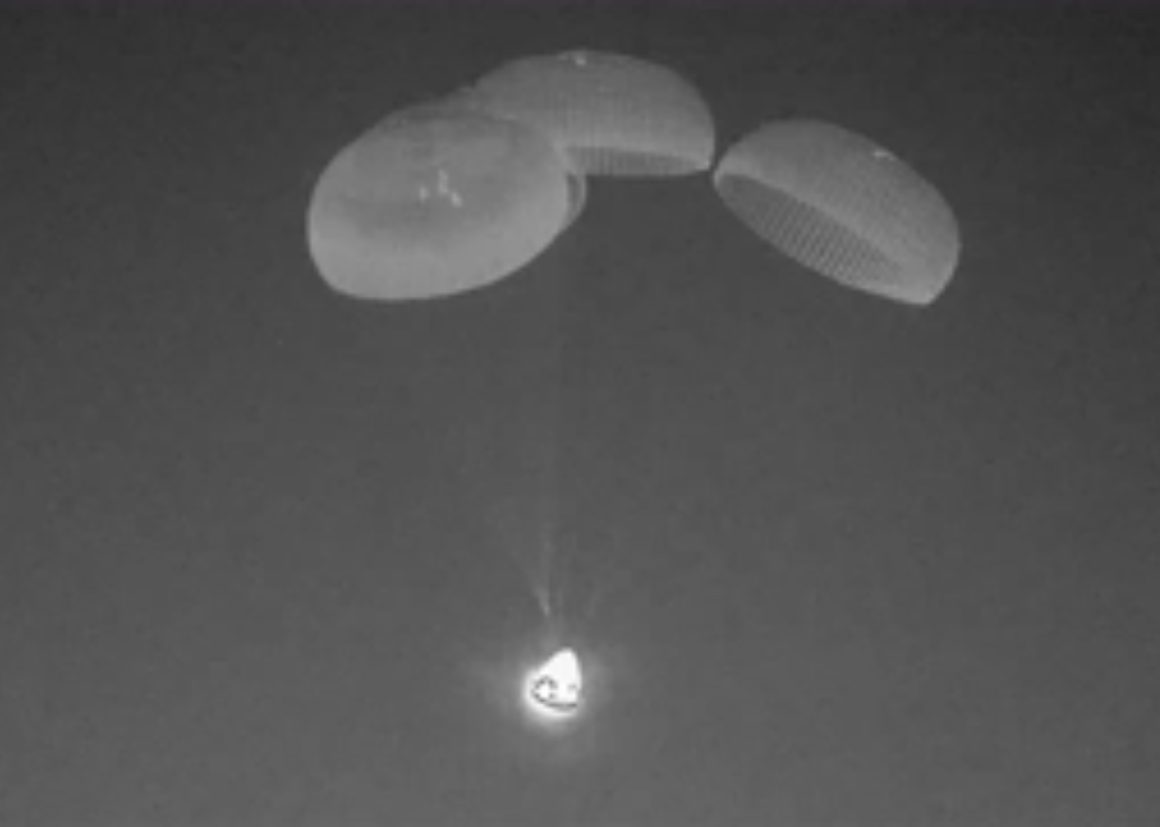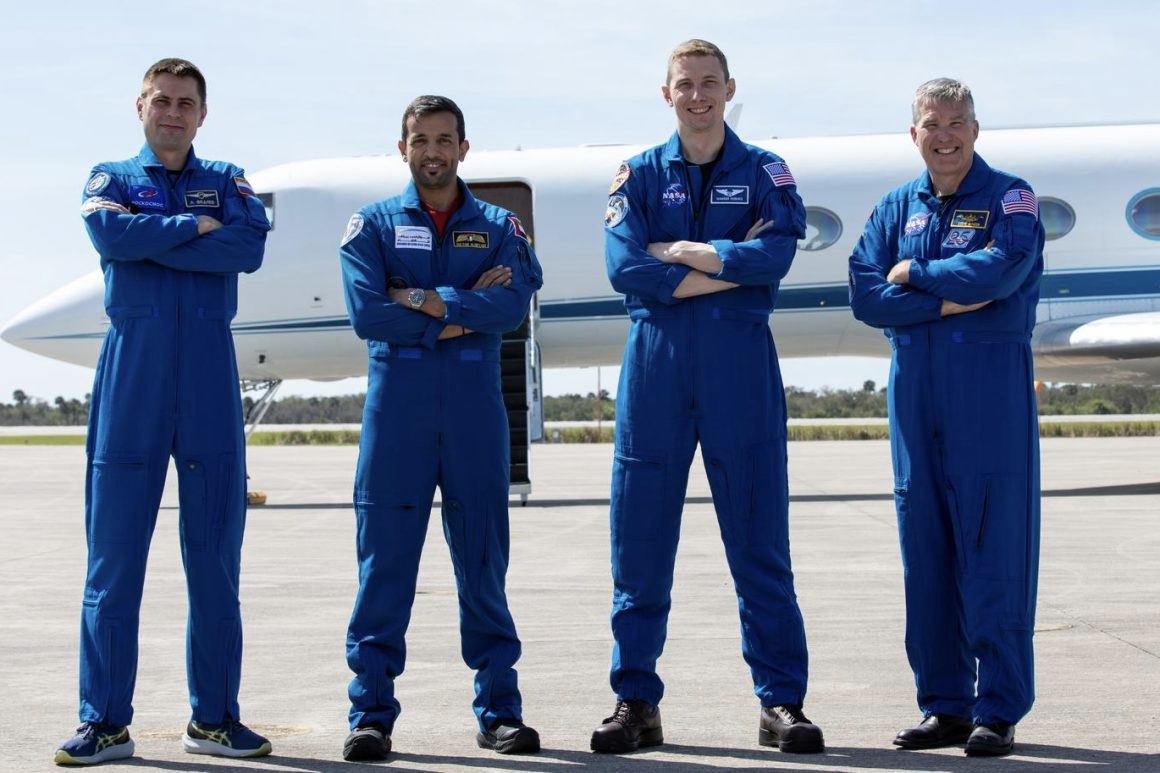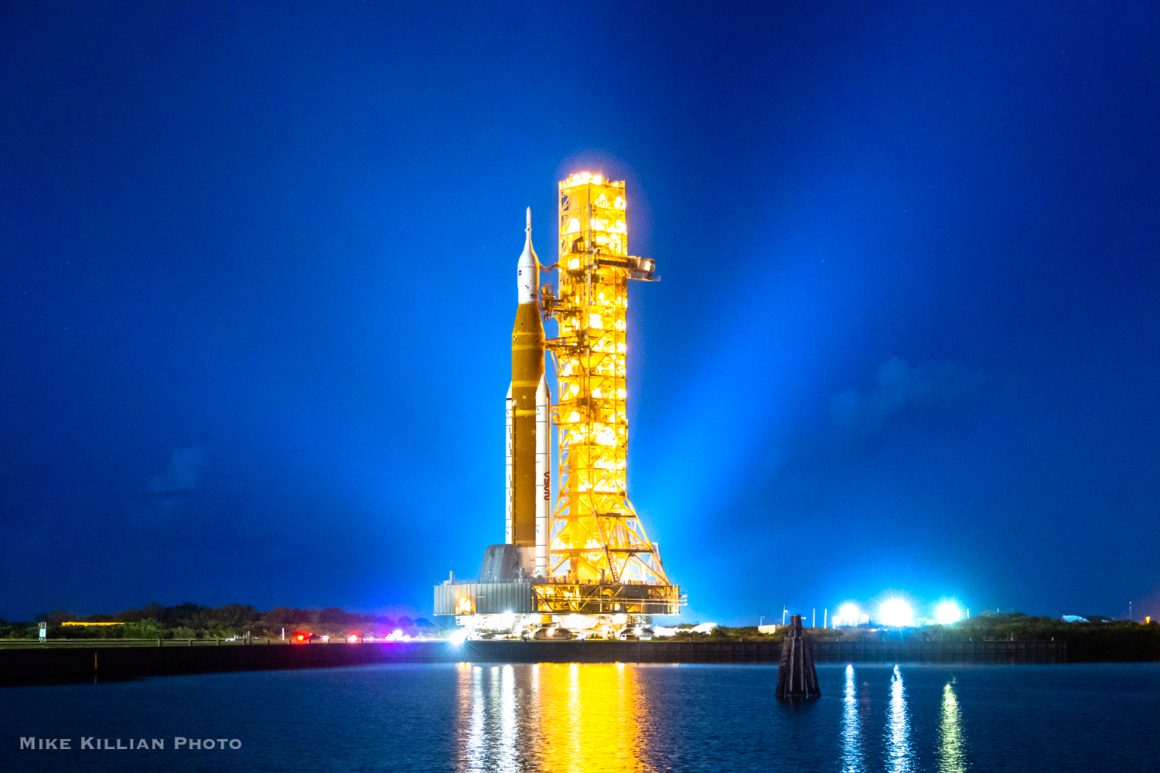Four astronauts are back on Earth today, following a nominal return last night from the International Space Station.
Their return wraps up a 6-month stay on the orbiting science outpost. People across half the state of Florida were given a rare and spectacular look at the dramatic fireball reentry. And we captured it on video.
Flying in a fireball like a shooting star
When returning to Earth, spacecraft have to first slam into the atmosphere. This helps to greatly slow down their velocity, but it also creates an enormous amount of friction, which turns into a plasma ball of fire surrounding the spacecraft as hot as the surface of the sun.
Just imagine rubbing your hands together so fast it creates a fireball. It’s the same reason you see a shooting star. It’s dust and rocks from comets and asteroids slamming into our atmosphere with so much friction they explode.
Historically, spacecraft reentry usually occurred over the open ocean, although the space shuttles sometimes reentered across the mainland U.S. (before the Columbia disaster in 2003).

NASA and SpaceX always have numerous location options for splashing down, in case of bad weather, rough seas or logistical issues at a primary location. Last night’s splashdown was targeted for the coast of Jacksonville, bringing the reentry over the center of the state and within view of millions of people.

It’s as impressive as the launch too. Appearing out of the western horizon like a bright missile streaking east. It was bright it cast shadows 100 miles away (where I was located). Counties close to the reentry path also heard the sonic booms.
The international crew of NASA astronauts Stephen Bowen and Woody Hoburg, as well as UAE (United Arab Emirates) astronaut Sultan Alneyadi and Roscosmos cosmonaut Andrey Fedyaev, spent a total of 186 days in space and logged 79 million miles traveled.

Lot of science accomplished on the ISS
According to NASA, the crew contributed to a host of science and maintenance activities and technology demonstrations on the ISS. Bowen conducted 3 spacewalks, joined by Hoburg for 2, and Alneyadi for 1, preparing the station for and installing two new Roll-Out Solar Arrays to augment power generation for the ISS.
The crew also contributed to hundreds of experiments and technology demonstrations, including assisting a student robotic challenge, studying plant genetic adaptations to space, and monitoring human health in microgravity to prepare for exploration beyond low Earth orbit and to benefit life on Earth.

The astronauts also released Saskatchewan’s first satellite which tests a new radiation detection and protection system derived from melanin, found in many organisms, including humans.
NASA and SpaceX have definitely worked well together under the agency’s Commercial Crew Program. NASA seeded SpaceX’s development in the first place, under orders from Congress and former President Obama. And now NASA contracts them to fly cargo, supplies and crews to and from the ISS.
Back to the Moon with Artemis
But how much longer the ISS stays in operation is a big unknown. NASA does not need Russia to maintain the ISS, but it sure will be a lot harder without them. Russia has stated numerous times that they plan to pull out of the ISS sooner than later.

NASA meanwhile is looking towards the moon with their Artemis missions, and is funding SpaceX to develop a lander. But those missions might fly only once a year. Artemis-2 won’t even launch until at least late 2024. The first moon landing would be a couple years later.
NASA wants a permanent human presence there, same as with the ISS. They plan to put a station in orbit around the moon to support those plans. The station would be called Gateway, and provide a staging point for surface missions and flights to / from Earth. It will also be a safe haven / lifeboat if anything went wrong with spacecraft, with room for additional modules to be installed.
